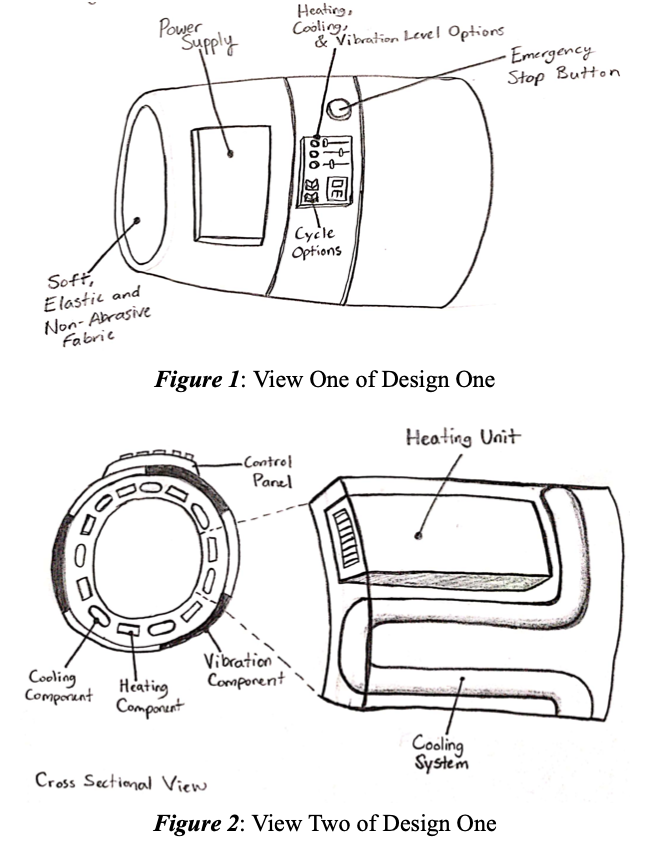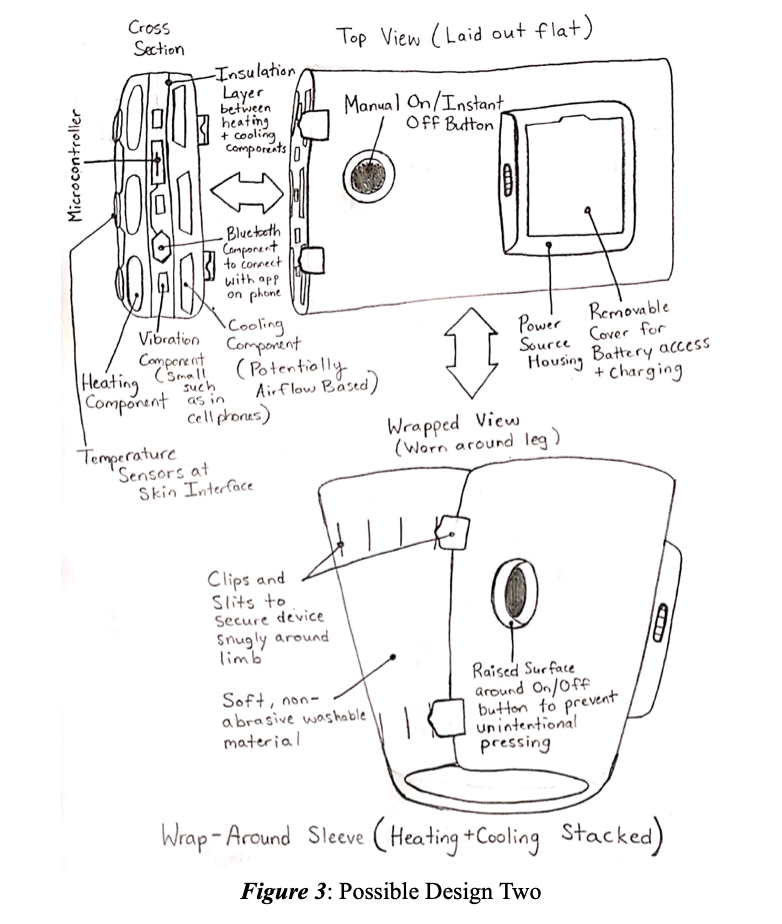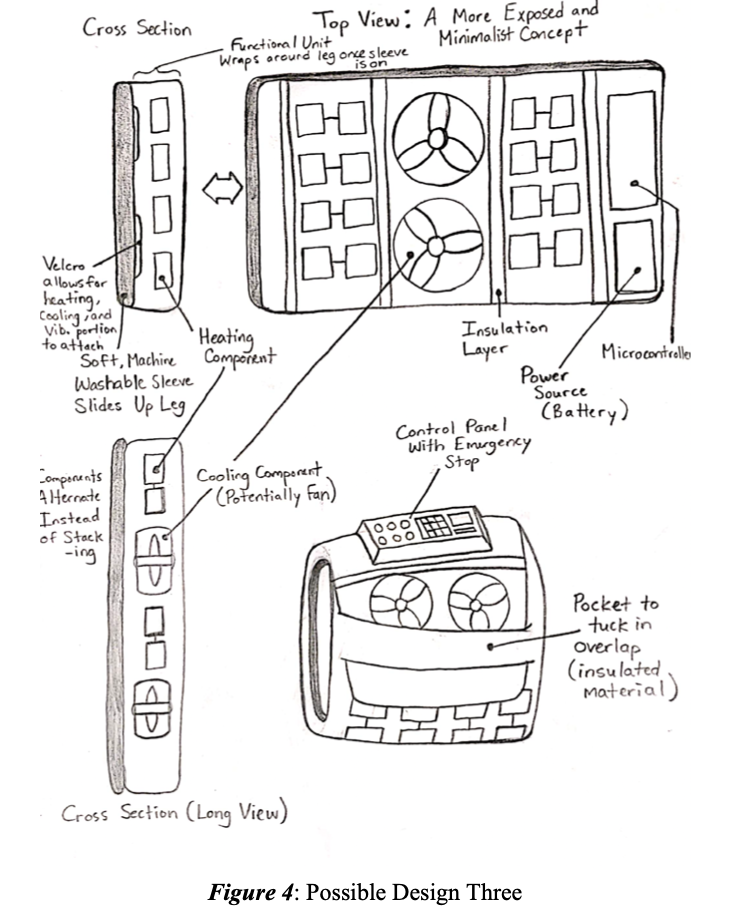
The first design consisted of a slide-on sleeve made of an elastic material (Figure 1). Unique aspects of this alternative design included a cooling system based on cold water circulation and a control panel on the outer sleeve. In this particular concept, the vibration components were placed the furthest away from the skin-device interface while the heating and cooling components were placed closer to the skin in an alternating fashion (Figure 2).

The second design consisted of a pad that would wrap around the thigh with a system in place to allow the user to adjust the circumference of the pad to ensure a snug fit around the limb. A built in bluetooth component was considered to make the inclusion of a mobile app possible. The main three components were treated as sheet layers spanning the length of the pad, with the heating and cooling components on opposite sides allowing it to be flipped by the user depending on which treatment they preferred. Lastly, the second design solution included a rechargeable battery within the pad so that it could be easily charged on the go for continued use (Figure 3).

The final proposed design incorporated cooling the skin through convective airflow. This design took the form of a wrap-around sleeve that was also adjustable. This design included a detachable elastic sleeve which could be washed to ensure continued cleanliness at the skin-device interface. The heating and cooling components were to be alternated along the length of the pad with the vibration component on the outside edge of the device. This way, the heating and cooling components would be the closest to the skin interface to provide effective therapeutic relief (Figure 4).
